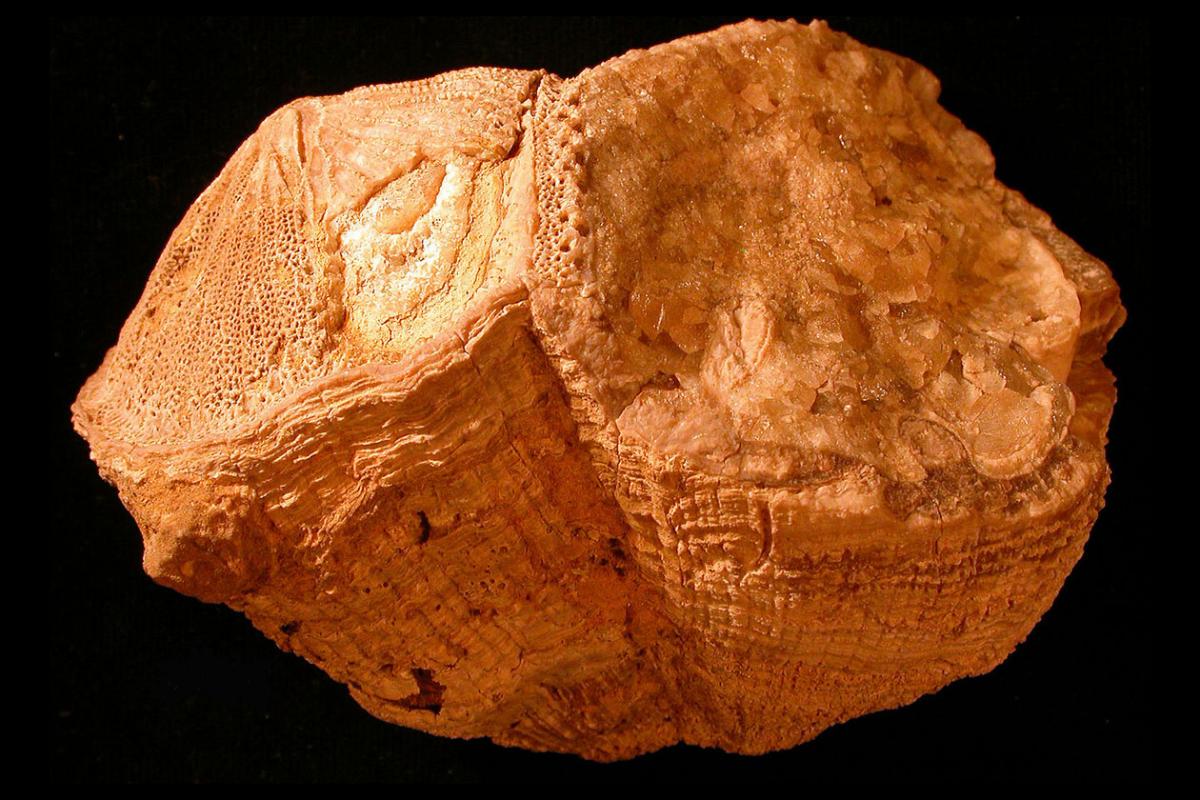D: That’s a nice fossil you’ve got there, Yaël. What is it?
Y: It’s a rudist clam, Don.
D: Those aren’t around anymore, right?
Y: No, they were around in the late Cretaceous and are extinct today. But their fossils can tell us a lot of surprising things, such as the length of a day 70 million years ago.
D: How can a mollusk fossil tell us that?
Y: A handy laser really helps. Scientists looked at a fossil of a rudist clam that lived in a shallow tropical seabed in what is now Oman. Rudists grew very quickly, so scientists can see a new growth ring for every day of the clam’s life. They used a laser to make tiny holes in the fossil that are about 10 micrometers in diameter to get samples. Then they examined all these tiny samples for trace elements that revealed information such as the temperature and chemistry of the water during the time they were formed, which told scientists how many rings the clam grew in a day, as well as the location of where one year ended and another began. This allowed the scientists to count the growth rings in a year, which led them to determine that the length of a year in the late Cretaceous was 372 days long, compared to today’s 365, and that a single day was 23 and a half hours long. Scientists already knew that days were shorter 70 million years ago, but this is the most accurate count we have to date of exactly how short.
D: Wow, I feel bad for those clams. I already feel like there aren’t enough hours in the day.










